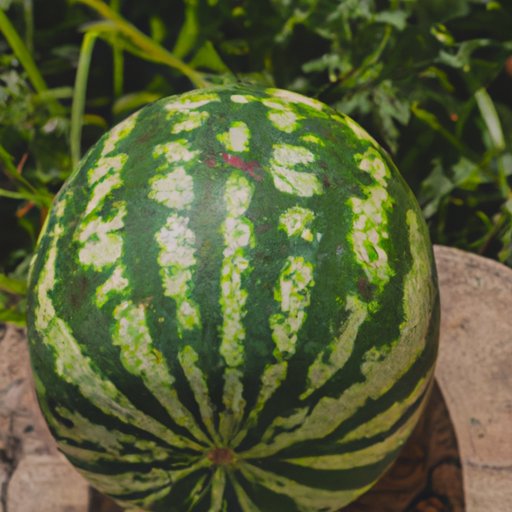
Introduction
Choosing a ripe watermelon can sometimes be a challenge. Watermelons come in a variety of shapes and sizes, and their thick skins make it difficult to determine if they are ready to be eaten. However, being able to identify a ripe watermelon is important to ensure that you are getting the sweetest and juiciest fruit possible. In this article, we will explore different methods of how to tell if a watermelon is ripe.
Appearance
One of the most obvious signs of a ripe watermelon is its appearance. Ripe watermelons have a distinct change in color from green to a deep green or brownish. The stripes of an unripe watermelon are more prominent while the stripes of a ripe watermelon are less visible. Additionally, the skin of a ripe watermelon should be dull rather than shiny.

Texture
The texture of a watermelon is also a helpful indicator of ripeness. A ripe watermelon should feel slightly firm but slightly yielding when pressed. If the watermelon is too hard, it is likely unripe, but if it is too squishy, it may be overripe. To check the texture, press your fingers against the skin of the watermelon, specifically at the ends where there is a bit of give.

Sound
Another method to determine the ripeness of a watermelon is by tapping it. Good watermelons should produce a hollow, crisp sound when tapped. To tap a watermelon, use the pads of your fingers to gently knock on the side of the fruit. Keep in mind that sound alone should not be the only factor to determine if a watermelon is ripe.
Weight
A ripe watermelon is typically heavier than an unripe one. To check the weight, hold the watermelon in your hands and compare it to similarly sized watermelons. If it feels heavier than it looks, it is a good indication that the watermelon is ripe.
Field Spot
The field spot is the area on the watermelon where it rested on the ground. This spot can be used as an indication of ripeness. When a watermelon is ripe, the field spot changes from white to yellow.

Stem
The stem and tendril of a watermelon can also be used to determine its ripeness. Ripe watermelons tend to have a dried out stem and tendril. Check the tendril closest to the stem; if it is green, it may not be ripe yet.
Conclusion
Choosing a ripe watermelon can be challenging, but by using a combination of the methods discussed in this article, you can confidently select the sweetest and juiciest fruit. Keep in mind that different methods may work better for different types of watermelons. By paying attention to the appearance, texture, sound, weight, field spot, and stem, you’ll be able to pick out the best watermelon for your needs.
Not only is it important to be able to identify a ripe watermelon, but it also ensures that you are getting the most nutrition and flavor out of your fruit. Remember, a ripe watermelon should be sweet, juicy, and delicious, making it a perfect summertime treat.




